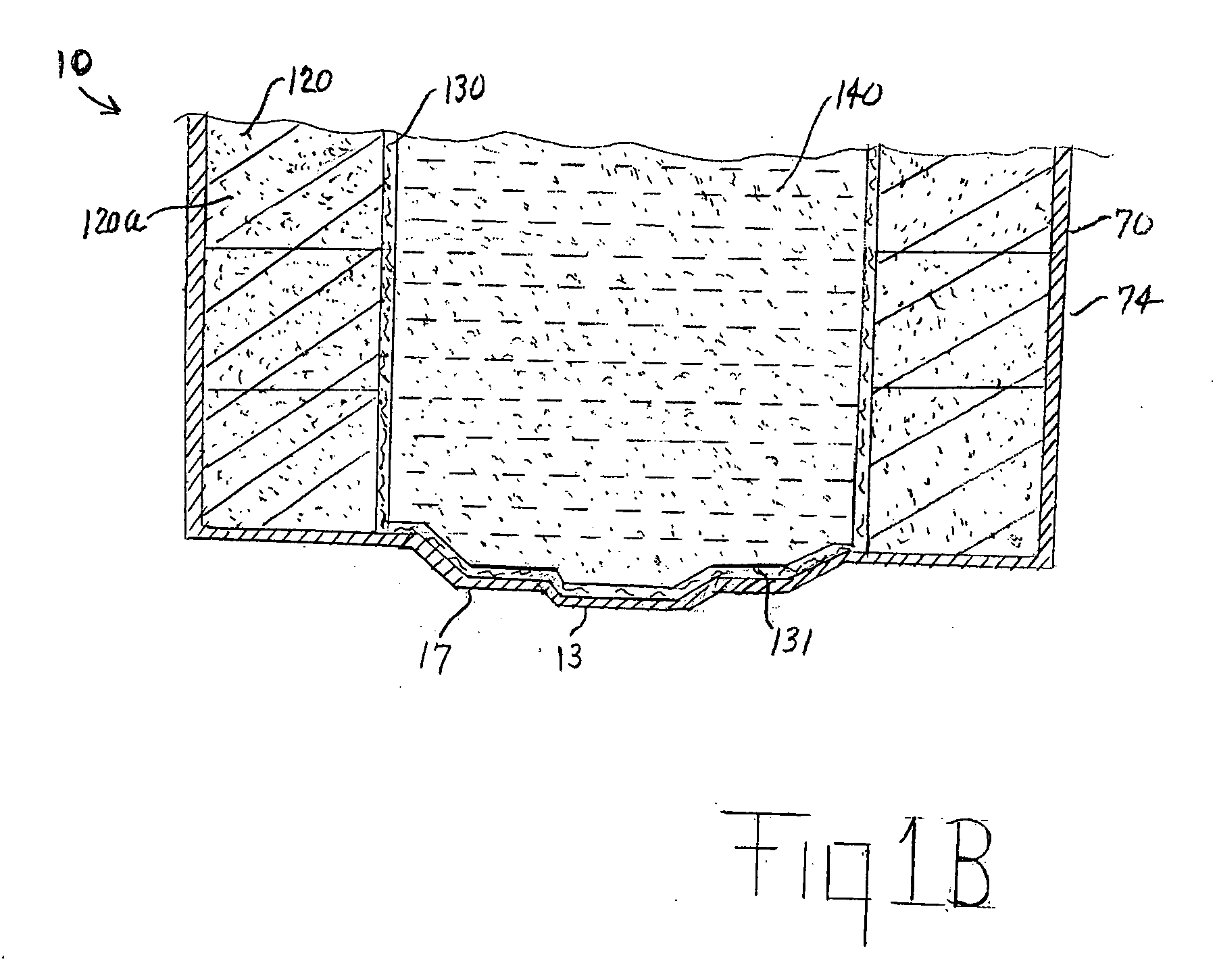End cap seal assembly for an electrochemical cell
a technology for sealing end caps and electrochemical cells, which is applied in the direction of cell components, cell components, jackets/cases materials, etc., can solve the problems of end caps not designed to withstand radial compressive forces, the cell's tendency to produce gases, and the end caps are not designed to meet the needs of a wide range of applications. , to achieve the effect of less capital and more efficien
- Summary
- Abstract
- Description
- Claims
- Application Information
AI Technical Summary
Benefits of technology
Problems solved by technology
Method used
Image
Examples
Embodiment Construction
[0038]A preferred structure of the end cap assembly 14 of the invention within cell housing 70 is illustrated in FIG. 1A. The end cap assembly 14 of the invention has particular applicability to electrochemical cells comprising a cylindrical housing 70 (FIG. 2A) having an open end 15 and opposing closed end 17, wherein the end cap assembly 14 (FIG. 2B) is inserted into said open end 15, to seal the cell. The end cap assembly 14 is particularly applicable to cylindrical alkaline cells of standard AAA (44×10 mm), AA (50×14 mm), C (49×25.5 mm) and D (60×33 mm) size. The end cap assembly 14 is particularly useful for smaller size alkaline cells such as AAA and AA size cell, but may be used advantageously in the C and D size cells as well. Such alkaline cell, as cell 10 (FIGS. 1A and 1B), desirably has an anode 140 comprising zinc, a cathode 120 comprising MnO2, with electrolyte permeable separator 130 therebetween. The cathode may be in the form of stacked compacted disks 120a comprisin...
PUM
| Property | Measurement | Unit |
|---|---|---|
| angle | aaaaa | aaaaa |
| angle | aaaaa | aaaaa |
| angle | aaaaa | aaaaa |
Abstract
Description
Claims
Application Information
 Login to View More
Login to View More - R&D
- Intellectual Property
- Life Sciences
- Materials
- Tech Scout
- Unparalleled Data Quality
- Higher Quality Content
- 60% Fewer Hallucinations
Browse by: Latest US Patents, China's latest patents, Technical Efficacy Thesaurus, Application Domain, Technology Topic, Popular Technical Reports.
© 2025 PatSnap. All rights reserved.Legal|Privacy policy|Modern Slavery Act Transparency Statement|Sitemap|About US| Contact US: help@patsnap.com



